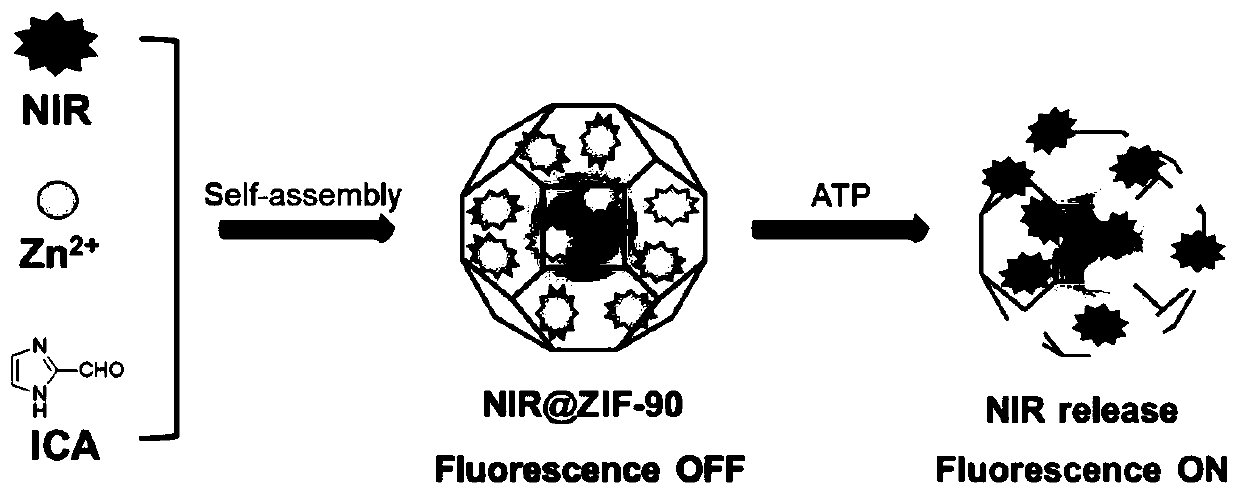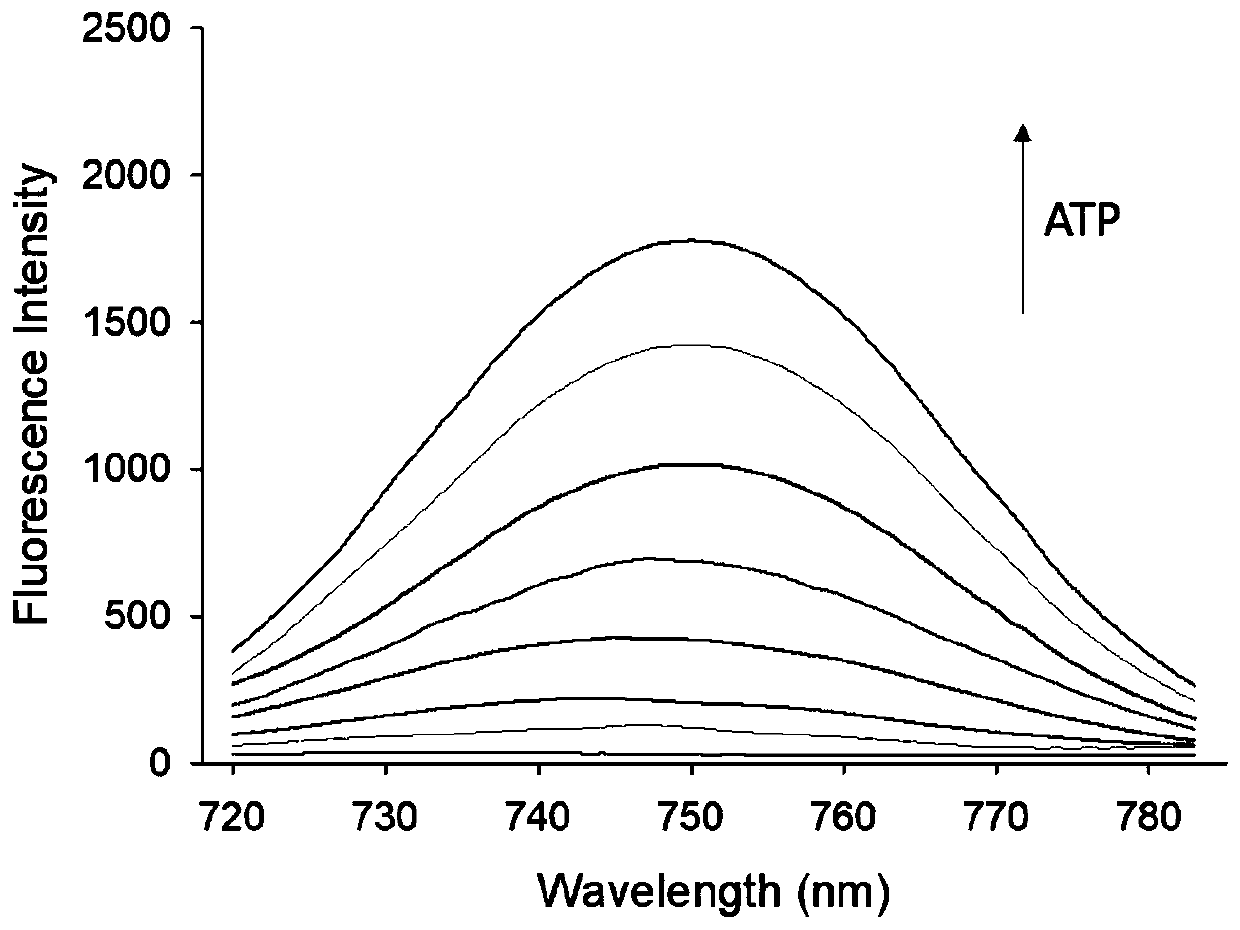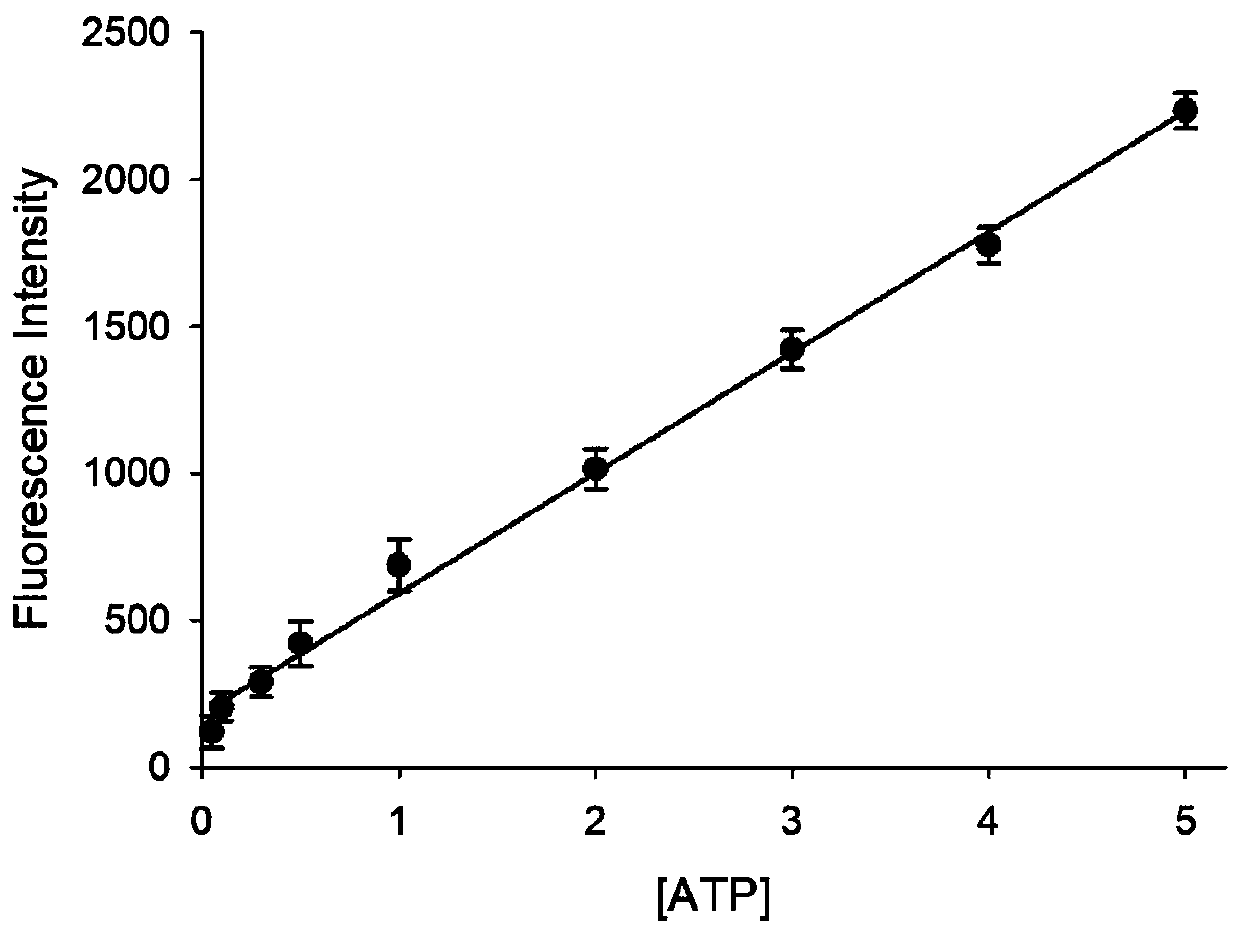Preparation and application of ATP (adenosine triphosphate) near-infrared nanometer fluorescence probe
A nano-fluorescent probe, adenosine triphosphate technology, applied in the field of fluorescent probes, to achieve good spectral response performance and rapid response
- Summary
- Abstract
- Description
- Claims
- Application Information
AI Technical Summary
Problems solved by technology
Method used
Image
Examples
Embodiment 1
[0025] Preparation of fluorescent probe
[0026] Preparation of rhodamine near infrared dye NIR: In a 100mL round bottom flask, slowly add 10 equivalents of cyclohexanone dropwise to 20mL of concentrated sulfuric acid and cool to 0°C, then add 5 equivalents of 2-(4 -Diethylamino-2-hydroxybenzoyl)benzoic acid. The reaction mixture was heated to 90° C., and the reaction was stirred for 1.5 h. The reaction was stopped, and the resulting solution was quickly poured into ice water, and then 2 mL of perchloric acid was added. After the crude product was filtered under reduced pressure and washed with cold water, an orange solid intermediate product was obtained (yield 89%). In a 100mL round-bottom flask, dissolve 1 equivalent of intermediate product and 1 equivalent of Fisher’s aldehyde in 8mL of anhydrous acetic acid. After stirring for 1.5h at 50℃, the reaction was quenched with 8mL of water. The product was filtered under reduced pressure and purified by silica gel column chromat...
Embodiment 2
[0029] Fluorescence probe and ATP solution preparation
[0030] Preparation of probe solution: Weigh a certain amount of probe and disperse it in water to prepare a 4mg / mL probe solution. Preparation of ATP solution: Weigh a certain amount of adenosine-5-triphosphate disodium salt, dissolve it in distilled water, configure it into a 20mM ATP solution, and store it in an environment at 4-8°C.
Embodiment 3
[0032] Measurement of the fluorescence spectrum of the interaction between fluorescent probe and ATP
[0033] figure 2 It is the fluorescence spectrum of the interaction between fluorescent probe and ATP, the concentration of fluorescent probe is 4mg / L, and the concentration of ATP is 0,0.05,0.1,0.3,0.5,1,2,3,4,5mM. The excitation wavelength is fixed at 700nm, and the emission wavelength range is 720-785nm. The slit width is 10.0nm / 10.0nm, and the fluorescence measuring instrument used is Hitachi F4600 fluorescence spectrophotometer. From figure 2 It can be seen that before adding ATP, the fluorescent probe has no obvious fluorescence emission; after adding ATP, an emission peak appears in the near infrared region (750nm). This is because ATP and Zn in the probe structure 2+ The binding results in the collapse of the zeolite imidazole structure of the probe, thereby releasing the fluorophore NIR encapsulated in it, and releasing the near-infrared fluorescence of the NIR. And ...
PUM
 Login to View More
Login to View More Abstract
Description
Claims
Application Information
 Login to View More
Login to View More - R&D
- Intellectual Property
- Life Sciences
- Materials
- Tech Scout
- Unparalleled Data Quality
- Higher Quality Content
- 60% Fewer Hallucinations
Browse by: Latest US Patents, China's latest patents, Technical Efficacy Thesaurus, Application Domain, Technology Topic, Popular Technical Reports.
© 2025 PatSnap. All rights reserved.Legal|Privacy policy|Modern Slavery Act Transparency Statement|Sitemap|About US| Contact US: help@patsnap.com



